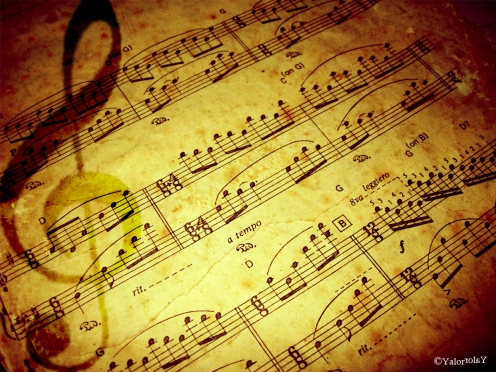A pure-tone wanted to sing but could only muster a single sound. Sometimes louder, other times softer, the pitch refused to change and soon fell into the background. Alone, she fractured herself into pieces to keep herself company. One tone became two, three, four, and so-on where together they could sing and form a harmonic. However as time went on, not all their arrangements were pleasant. Many of the overtones competed, singing loudly to drown out others. Some were shy and preferred to stay mute, nearly forgetting their voice. Thus, a leader was needed and the original pure-tone, now fundamental as all the overtones were multiples of herself, accepted the role. Hence, the nice-sounding arrangements were organized into timbres and the group took to the streets, whistling their harmonics.
One day, the harmonic encountered another group with voices that didn’t match their own. A cacophony ensued and the two groups argued from morning to dusk until only murmurs and whispers could be heard. Once all the voices had died down, the two pure-tones fundamental to their respective harmonics met and began to take turns speaking. From that meeting onwards, the two groups of harmonics began to understand one-another. Pace, beat, and rhythm gave their conversations order and comprehension. Seeing the possibilities of what they could sing together, the two harmonics decided to merge into a harmony, traveling and singing as one.
Over the years, the harmony would grow large in size. To identify among themselves, they assigned symbols from an alphabet. Distant harmonics were given letters A to G whereas their close cousins were assigned suffixes like flat and sharp. Together, their voices struck a balance between tense and relaxed, hard and soft, tonic and atonic. Groups of three formed chords. Groups of eight that lead and ended with fundamentals formed octaves and scales. However with all the organization and structure of a troupe, the harmony lacked direction, a soul and its impulse to move beyond mere voice. In other words, harmony needed a melody, a heart that could resonate, sway, and inspire the hearts of others. This task it could not accomplish alone so it wrote itself into the natural world, leaving behind a legacy that others can listen to, compose from, and speak with across the ages.
